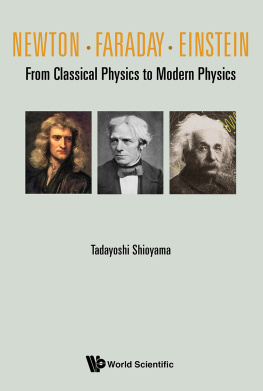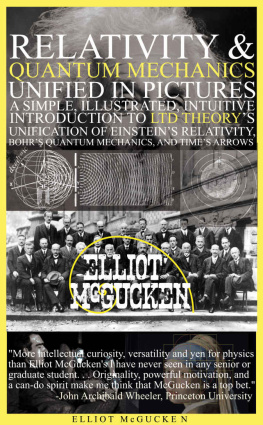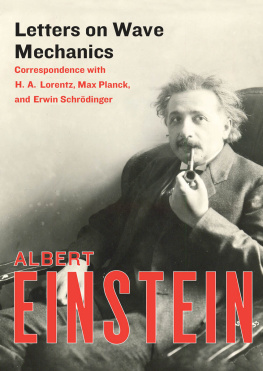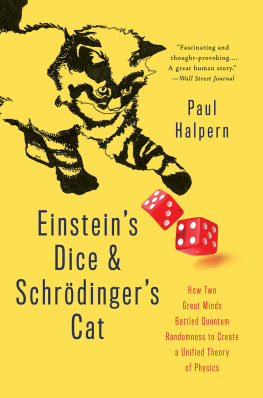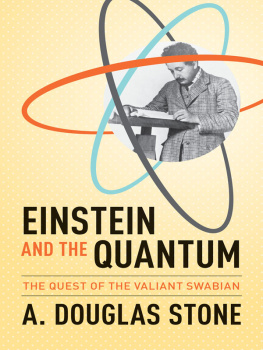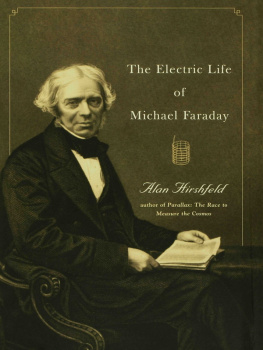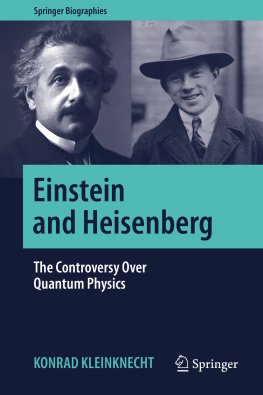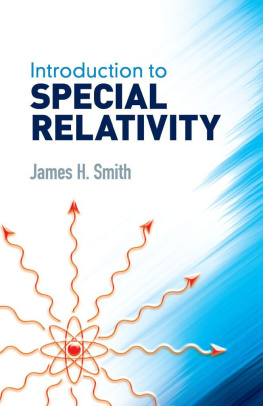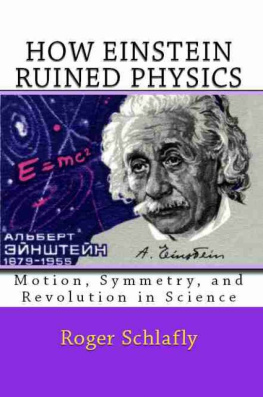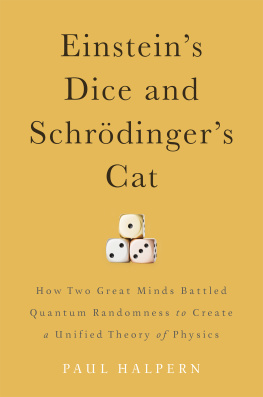Contents
Pagebreaks of the print version

NEWTON FARADAY EINSTEIN
From Classical Physics to Modern Physics
NEWTON FARADAY EINSTEIN
From Classical Physics to Modern Physics
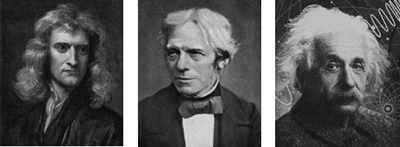
Tadayoshi Shioyama
Kyoto Institute of Technology, Japan

Published by
World Scientific Publishing Co. Pte. Ltd.
5 Toh Tuck Link, Singapore 596224
USA office: 27 Warren Street, Suite 401-402, Hackensack, NJ 07601
UK office: 57 Shelton Street, Covent Garden, London WC2H 9HE
Library of Congress Cataloging-in-Publication Data
Names: Shioyama, Tadayoshi, author.
Title: Newton, Faraday, Einstein : from classical physics to modern physics / Tadayoshi Shioyama.
Description: New Jersey : World Scientific, [2021] | Includes bibliographical references and indexes.
Identifiers: LCCN 2021012080 (print) | LCCN 2021012081 (ebook) |
ISBN 9789811235672 (hardcover) | ISBN 9789811236242 (paperback) |
ISBN 9789811235689 (ebook for institutions) | ISBN 9789811235696 (ebook for individuals)
Subjects: LCSH: Newton, Isaac, 16421727. | Faraday, Michael, 17911867. |
Einstein, Albert, 18791955. | Physicists--Biography. | Physics--History.
Classification: LCC QC15 .S447 2021 (print) | LCC QC15 (ebook) | DDC 530.092/2 [B]--dc23
LC record available at https://lccn.loc.gov/2021012080
LC ebook record available at https://lccn.loc.gov/2021012081
British Library Cataloguing-in-Publication Data
A catalogue record for this book is available from the British Library.
Copyright 2021 by World Scientific Publishing Co. Pte. Ltd.
All rights reserved. This book, or parts thereof, may not be reproduced in any form or by any means, electronic or mechanical, including photocopying, recording or any information storage and retrieval system now known or to be invented, without written permission from the publisher.
For photocopying of material in this volume, please pay a copying fee through the Copyright Clearance Center, Inc., 222 Rosewood Drive, Danvers, MA 01923, USA. In this case permission to photocopy is not required from the publisher.
For any available supplementary material, please visit
https://www.worldscientific.com/worldscibooks/10.1142/12243#t=suppl
Printed in Singapore
Preface
Our current lives are a result of scientific evolution, so awareness of the progress in scientific advances opens the doors to a new era. This book describes the lives of three great scientists who made remarkable discoveriesNewton, Faraday and Einstein. By focusing on their stories, the readers will understand that the common thread shared by them in their scientific journeys was a genuine enthusiasm to scholarship rather than any lust for fame or a sense of rivalry.
The progress of physics is surveyed as follows: Why is it that celestial bodies in the universe move according to Keplers laws? This problem was elucidated by Newton who explained the motion of celestial bodies with three laws of motion as described in Principia. Using Newtons principles, the heliocentlic theory, proposed by Copernicus and supported by Galileo and Kepler, was shown to be correct. The mechanics as outlined by Newton was called Newtonian mechanics that became dominant until the end of the nineteenth century.
Electromagnetic phenomenon was researched by Faraday who discovered the electromagnetic induction that transforms magnetism to electricity, Faradays effect (magneto-optical effect) and so forth. Furthermore, based on such experimental results, Maxwell laid the foundation of electromagnetic theory. Newtonian mechanics and electromagnetic theory together constituted the two greatest theories in classical physics until the end of the nineteenth century.
However, from the end of the nineteenth century to the beginning of the twentieth century, some experimental results could not be elucidated by classical physics. The experimental results on the relation between intensity and frequency of blackbody radiation was difficult to be resolved by classical physics. In 1900, Planck derived Plancks formula which strictly adhered to the experimental results of blackbody radiation. From physical interpretation of the formula, Planck discovered the concept of quantum. In 1905, introducing the concept of quantum, Einstein succeeded in theoretically elucidating the phenomenon of photoelectric effect where an electron was emitted from the metal irradiated with light. This successfully confirmed the concept of quantum, after which quantum mechanics was founded as an epoch-making mechanics following Newtonian mechanics.
According to relativity principle, the velocity of light measured in any coordinate system moving at a constant velocity (called inertial frame) should be constant always. Relativity principle was supported by MichelsonMorley experiment in 1887. However, in classical physics, the velocity of light was different in different inertial frames, and therefore, the experimental result by MichelsonMorley could not be explained by classical physics. In order to resolve this contradiction, Einstein revised the concept of time-space and founded relativity theory supporting relativity principle. Thus, Einstein contributed to the foundation of quantum mechanics and relativity theory which constitute the two greatest theories in modern physics.
These significant contributions to the progress of physics as mentioned above led to this book focusing on Newton, Faraday and Einstein. In a nutshell, Newton and Faraday contributed to the foundation of Newtonian mechanics and electromagnetic theory which comprise the two significant theories in classical physics, respectively. And, Einstein contributed to the foundation of quantum mechanics and relativity theory recognized as the two greatest theories in modern physics.
This book also describes other geniuses related to the three great ScientistsGalileo who was of considerable influence on Newton; Kepler who discovered laws of orbital motion of planets; Euler and Lagrange who founded the analytical mechanics which was a compromise between Newtonian mechanics and quantum mechanics; Volta who invented electric battery which played an important role in experiments by Faraday; Maxwell who succeeded in theorizing electromagnetic phenomena discovered by Faraday; Planck who proposed the concept of quantum which led to quantum mechanics and influenced Einsteins research on the photoelectric effect; de Broglie who proposed the concept of the particle-wave duality of electron; and Schrodinger who was influenced by de Broglies idea and founded quantum mechanics.
The contents of the book is a result of the lecture entitled History of science and technology taught by the author at Kyoto Institute of Technology for about 10 years until 2006.
It helps the readers understand the progress in physics from classical to modern. Scientific knowledge and academic terms that are useful for understanding this book have been clarified with suitable explanations and appendices. This feature of the book will set it apart from general biographies.
It is written with the hope that youth worldwide on whom depends the future, will develop interest in science. The readers are to hold on to their hopes as these great scientists had to overcome adversities.

